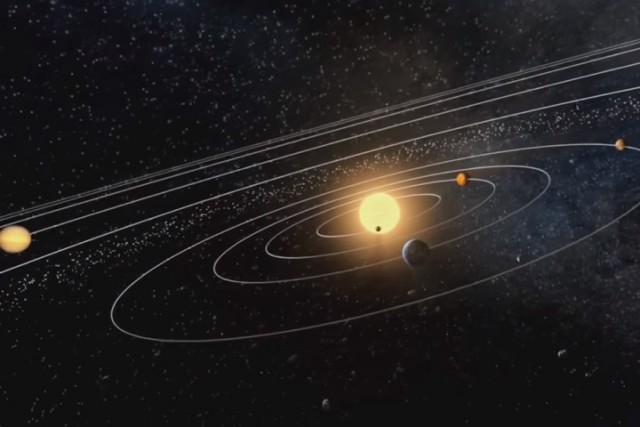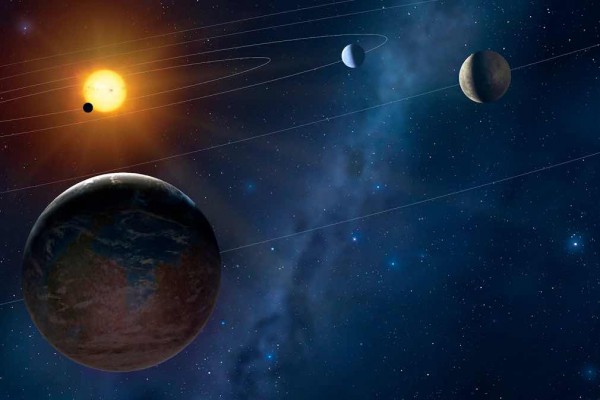Mass extinctions, events where a significantly large number of species go extinct, have occurred five times throughout Earth’s history. Although extinction is part of the natural evolutionary process, some suspect a ninth planet lurking on the edges of the solar system may be responsible for the wave of mass extinctions to sandblast the planet.
New life was breathed into a tired hypothesis that the solar system harbors a ninth planet earlier this year. The mysterious planet is too far away to be directly observed, but that hasn’t stop astronomers from using indirect means to detect it.
Astronomer Mike Brown was one of the researchers from Caltech to announce the possibility of a ninth planet, appropriately named Planet Nine. The object has a mass about 10 times greater than Earth and is nearly 20 times farther away from the sun than Neptune. Yesterday, Brown announced that he had stumbled across additional evidence that could help verify the planet’s existence.
Mystery planet unleashes plague of comets into the inner solar system
Adding to the mystery of its potential existence, some scientists think Planet Nine may have launched a flurry of comets into the inner solar system, spurring five mass extinction events on Earth.
According to Dr. Daniel Whitmire, a retired physics professor from the University of Arkansas, Planet Nine may spark comet showers, which would be able to intersect with Earth’s orbit, strike the planet and trigger a mass extinction event.
Dr. Whitmire and fellow researcher John Matese originally proposed a link between Planet X and mass extinction events back in 1985 in a paper published in the journal, Nature. At the time of the paper, there were three hypotheses on the table about what was responsible for recurring comet showers.
Some astronomers thought the comet showers were triggered by the existence of a ninth planet, dubbed Planet X. Others thought a sibling star born from the same cloud of dust and gas as the sun was to blame, whereas others thought the oscillations of the sun as it whirled around the galaxy bared some responsibility.
If a mysterious planet lurking on the outskirts of the solar system had been discovered in 1985, then the planetary catalog would have included ten heavy bodies, since Pluto wasn’t demoted to a dwarf planet until 2006. Hence the name Planet X, with X being the roman numeral for ten.
Renewed interest in the Planet hypothesis
Both the sibling sun hypothesis and the oscillation hypothesis have been deemed implausible by astronomers. The remaining hypothesis, Planet X, is the only viable hypothesis still on the table.
According to Whitmire and Matese’s hypothesis, as Planet X swings around the sun, its titled orbit slowly rotates as it makes its way through the Kuiper Belt, a region of the solar system home to several comets and asteroids, every 27 million years. The planet’s orbit causes comets to be flung into the inner solar system.
Professor Brown and colleagues inferred the existence of a ninth planet due to irregular orbits observed in objects in the Kuiper Belt. However, there is much speculation about the existence of additional planets in the outer regions of the solar system. It is uncertain whether Brown’s Planet Nine is the same as Whitmire and Matese’s Planet X.
“’Whitmire has been speculating for decades about a very distant very massive planet pushing comets around. It has to have an orbital period of something like 27 million years,’ Professor Brown told MailOnline.
“While that idea may or may not make sense, it definitely has nothing to do with Planet Nine, which is much closer to the sun and thus “only” takes 15,000 years to go around. The evidence for Planet Nine says nothing about whether or not there is a more distant Planet X,” he added.
Nevertheless, Dr. Whitmire maintains that Planet X and Planet Nine could be one in the same.
“I feel very positive about the new evidence though the current estimates are not completely consistent with our Planet X model,” he told the DailyMail.
“However it may be possible that a smaller closer planet could also explain the anomalies in the orbits of the Kuiper belt objects since there are uncertainties in their estimates.
“The effect of a planet depends on both its mass and distance so a closer, less massive planet can produce similar gravitational effects. The Planet Nine authors acknowledge that other combinations of mass and distance can’t yet be ruled out.
“Two of the properties of Planet Nine, its orbital inclination (tilt) and eccentricity (elongation), are very consistent with our Planet X model requirements.
“Alternatively, even assuming their estimates are exactly correct there could be two trans-Neptunian planets as others have suggested.”
Sources include:
DailyMail
Phys.org
EndangeredSpeciesInternational.org
Caltech.Edu
DailyMail
SpaceNews
Science.NaturalNews.com
















